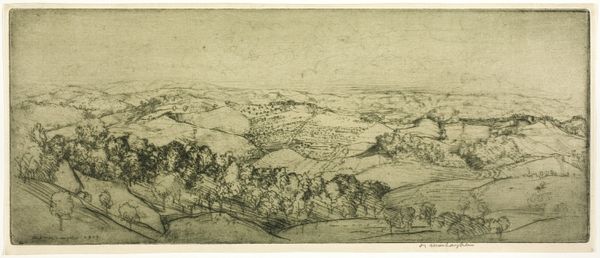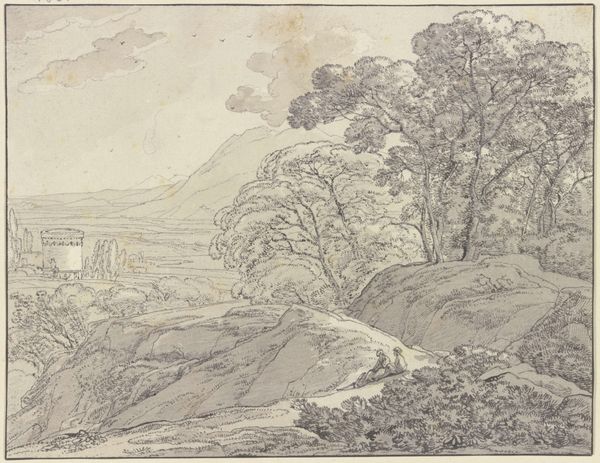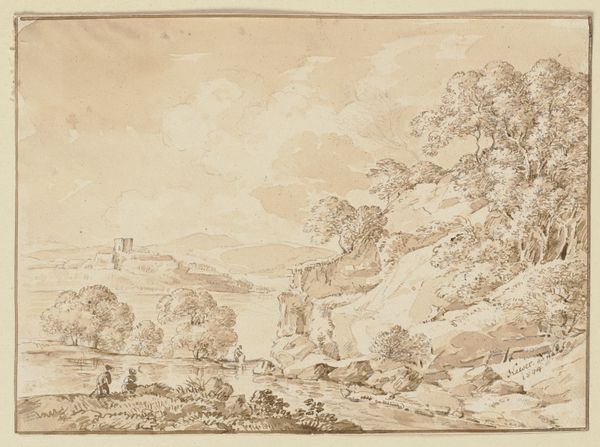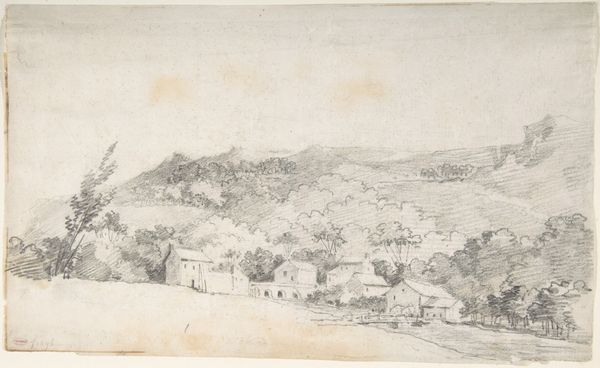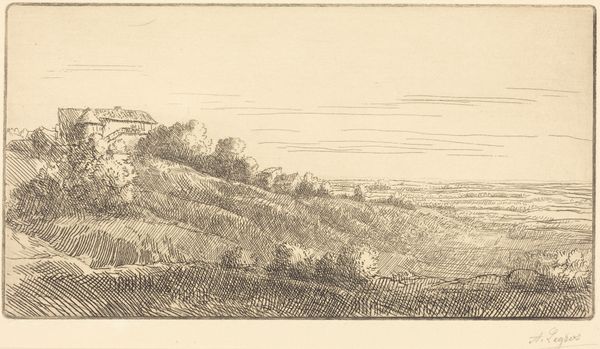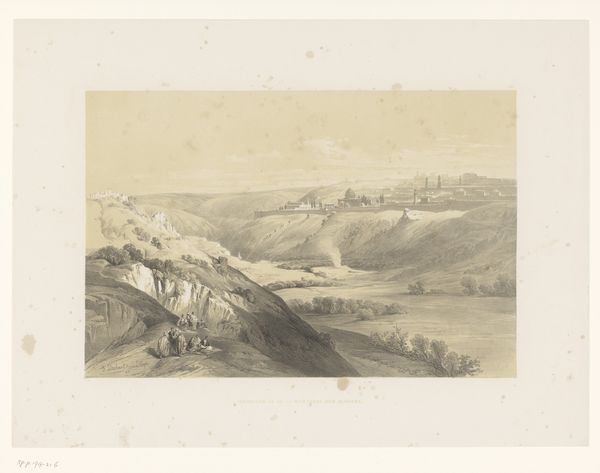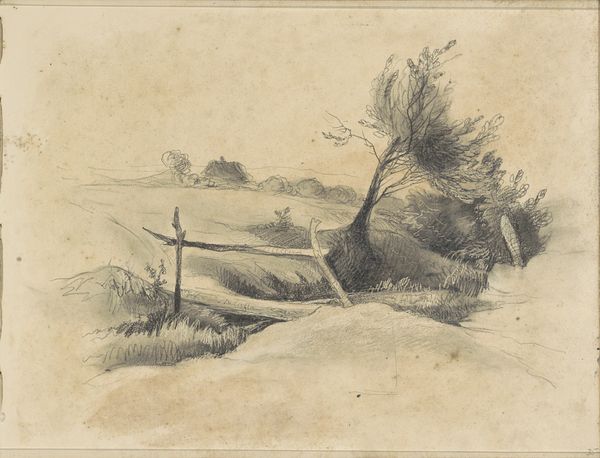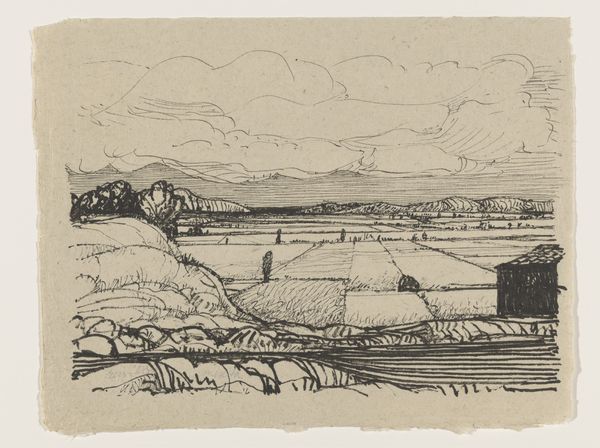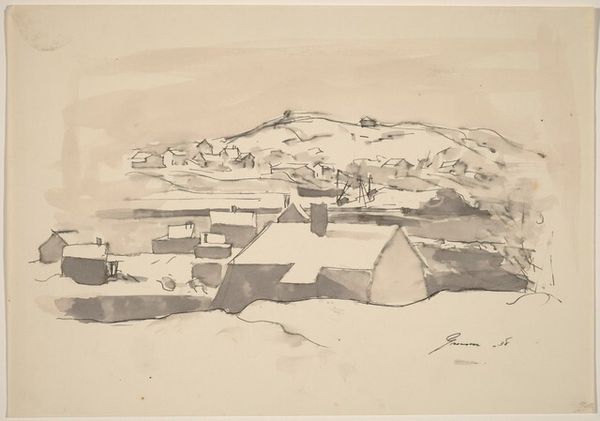
drawing, ink
#
drawing
#
landscape
#
ink
#
romanticism
Dimensions: 10 x 13 7/8 in. (25.4 x 35.24 cm) (image)
Copyright: Public Domain
Editor: So, this ink drawing, "Hilltop Vista," attributed to James Dickson Innes, from the 19th century. There's this overwhelming feeling of nostalgia when I look at it – everything rendered in sepia tones. What visual narratives do you perceive in this scene? Curator: The sepia tones immediately signal a romanticized vision of the past, yes. Think of sepia’s frequent use in early photography - a constructed longing for simpler times. Look closely; how does Innes use line to define the landscape? It’s not just about outlining shapes. Editor: Well, the lines seem to direct your gaze – from the buildings on the hill down into the valley, along those winding paths and even the shape of the river... Is the architecture particularly significant here, maybe in relation to how people moved through that landscape? Curator: Precisely! Architecture, like the viaduct, signifies human intervention on nature. It evokes the industrial revolution but represented so serenely, almost blended into the hills. Are those paths and roadways really functional or are they purely aesthetic, romantic wanderings? Think of the human need to both control and commune with nature; you find that conflict constantly explored in Romanticism. Editor: It makes me wonder about the stories that this landscape holds - about journeys taken, lives lived. Do you think Innes aimed to preserve a particular feeling or memory of this place? Curator: Yes, and in the encoding, the artistic choices in subject matter and stylistic rendition of the artwork also tells us something about the needs of those audiences who beheld it, back then. It's an open question whether those are always the same human needs across different generations. Editor: That’s fascinating to think about – how the act of looking preserves meaning. Thanks for opening my eyes to some of those complex layers of this image.
Comments
minneapolisinstituteofart almost 2 years ago
⋮
James Innes spent much of his brief adulthood in the warm climate of southern France and Spain due to an advancing case of tuberculosis. It is probably in the foothills of the Pyrenees mountains that he made this dynamic view of the countryside. Despite his travels, he was at the nexus of London’s avant-garde art scene as a member of the forward-looking Camden Town Group. Augustus John, a fellow member of the Group remembered him as a colorful character who wore tall pilgrim hats and colorful silk scarves, carried a gold-headed ebony cane, and masked his Welsh origins with a phony English accent.
Join the conversation
Join millions of artists and users on Artera today and experience the ultimate creative platform.


